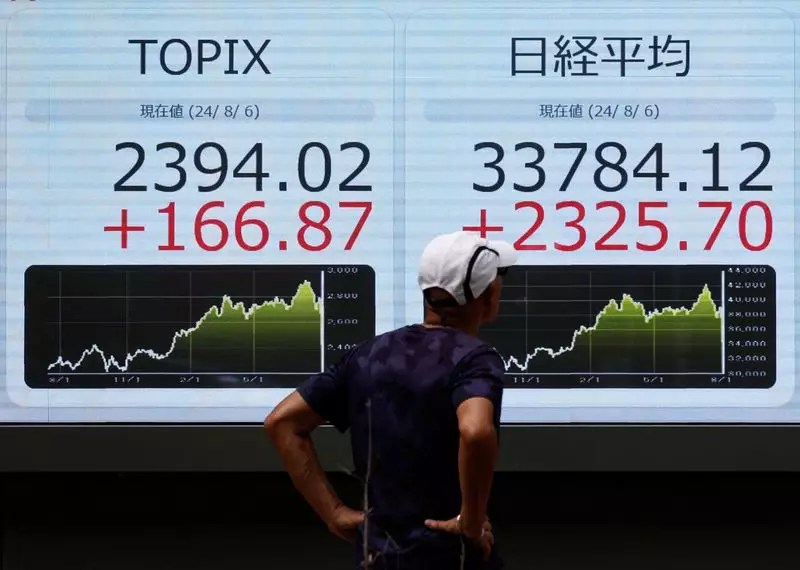On a promising Tuesday, Asian equities reached their highest levels in over two months, buoyed significantly by soaring expectations surrounding potential U.S. interest rate cuts. This positive sentiment played a pivotal role in energizing investor confidence, as pivotal developments awaited from the Reserve Bank of Australia (RBA), which is gearing up for an influential policy meeting. With the U.S. Federal Reserve’s recent decision to cut rates by 50 basis points, speculation arose that Australia might soon follow suit, although it seems poised to maintain its current stance for the time being.
Compounding this financial optimism was a highly anticipated address from China’s financial authorities, who introduced a comprehensive package of measures designed to revitalize a faltering economy. Particularly noteworthy among these initiatives was a reduction in mortgage rates for existing home loans—a significant move aimed at bolstering consumer confidence and stimulating housing market activity. Analysts are hopeful that these steps will provide the necessary support to reignite growth in a crucial sector of the Chinese economy, which has displayed signs of fatigue recently.
Expectations indicate that the RBA will maintain its existing interest rates during this week’s meeting, reflecting a carefully measured approach to inflation management. Charu Chanana, a respected voice in currency strategy at Saxo, notes that the RBA’s hawkish positioning is essential for anchoring inflation expectations. She suggests that any shift in policy might not emerge until the upcoming meeting on November 5, particularly influenced by upcoming labor market data and the Q3 Consumer Price Index (CPI) report. The careful calibration by the RBA underscores a broader global strategy among central banks to carefully navigate the fine line between stimulating growth and managing inflationary pressures.
The current state of the markets reflects a generally steady atmosphere, with the MSCI Asia-Pacific Index excluding Japan showing a minimal increase of 0.04%. Among regional players, Japan’s Nikkei Index performed notably well, surging by 1.69%—an exceptional uptick that signals investor faith as they await critical comments from the Bank of Japan Governor, Kazuo Ueda. Renewed investor interest and rising stock valuations speak to broader trends in market sentiment amid easing monetary policies and financial reassessments throughout the region.
In the United States, the aftermath of the Fed’s substantial easing has left markets pondering the implications for future rate adjustments. Policymakers continue to voice the need for cautious navigation in the face of existing economic indicators. Chicago Fed President Austan Goolsbee acknowledged this delicate balancing act, emphasizing the importance of reacting to economic conditions without falling behind the curve. The upcoming non-farm payrolls report set for October 4 presents a key indicator that could determine whether the markets pivot towards anticipating more substantial rate cuts.
As market dynamics unfold, the U.S. dollar has experienced fluctuations, with the dollar index hovering at 100.95, close to a one-year low. The euro, meanwhile, remains steady at about $1.11055, despite earlier sentiments that led to a dip. Investor sentiment surrounding the European Central Bank’s future actions, particularly concerning interest rate adjustments, continues to evolve in response to business activity reports that have fallen short of expectations.
Commodity trends reveal nuanced developments as well, with crude oil prices showing slight increases amid a resilient outlook. Brent crude futures climbed 0.26%, reflecting some stabilization in global energy markets after facing downturns linked to demand concerns and disappointing data from Europe over the previous days.
The current market milieu indicates an intricate balance of optimism and caution as global economic indicators intertwine with central banking strategies. As investors keep a vigilant eye on upcoming reports and policy shifts, the interplay of market forces will continue to define asset trajectories in both Asia and beyond.


Leave a Reply